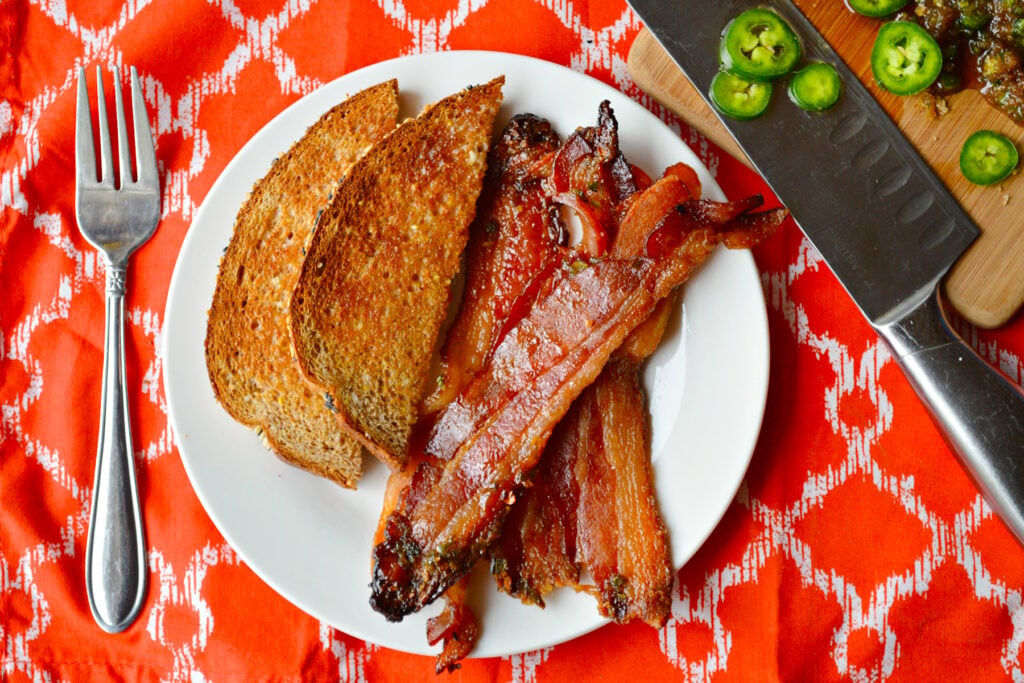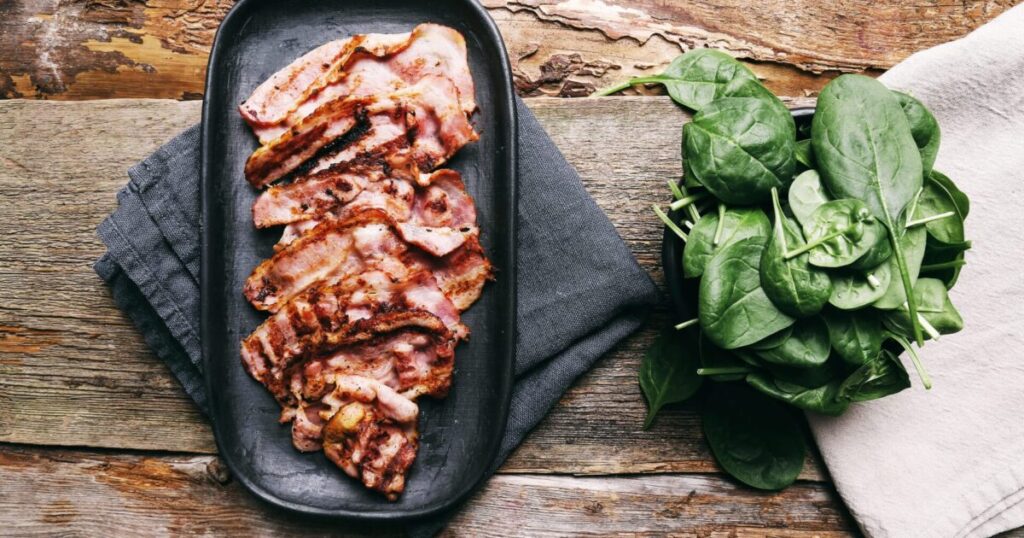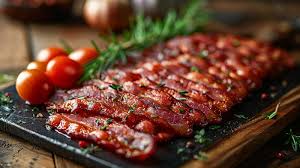How to cook turkey bacon: Want a tasty and healthier option instead of regular bacon? Try turkey bacon! It’s easy to cook in different ways for a crispy texture and great flavor. Whether you’re baking, frying, or pan-searing, this guide will show you how to make it perfectly.

A close-up shot of crispy, golden-brown turkey bacon sizzling in a skillet, with steam rising, surrounded by fresh herbs and spices, showcasing a healthy breakfast setting.
Learn More Recipe: How to Cook Turnips
Key Takeaways
Discover easy and delicious methods for cooking turkey bacon to perfectionLearn techniques for achieving the ideal crispy texture in your turkey baconExplore the benefits of turkey bacon as a healthier alternative to traditional baconGet tips on oven-baking, pan-frying, and other cooking methods for turkey baconEnhance your meals with the savory flavor of perfectly cooked turkey bacon
Introducing Turkey Bacon: A Healthier Alternative
More people are looking for healthier food choices, and turkey bacon is becoming a top pick over traditional pork bacon. But what is turkey bacon, and how does it stack up against regular bacon? Let’s dive into turkey bacon and see what makes it a good choice.
What is Turkey Bacon?
Turkey bacon is a meat product made from turkey, not pork. It aims to taste and feel like regular bacon but with some big differences. It’s usually lower in fat and calories, making it a great choice for those wanting to eat healthier.
Benefits of Turkey Bacon
Choosing turkey bacon over regular bacon means getting fewer fats and calories. Turkey bacon has about 30-50% less fat and calories than pork bacon. This is great for people watching their weight or living a healthier life.
Also, turkey bacon has less sodium than traditional bacon. This is good for those on a low-sodium diet or worried about heart health. Some studies show eating turkey bacon might lower the risk of heart disease and type 2 diabetes.

Turkey bacon isn’t a perfect swap for regular bacon, but it’s a good choice for those wanting a healthier option. Knowing the differences and benefits of turkey bacon helps you decide which bacon is best for you.
Learn More Recipe: How to Cook Skirt Steak
How to Cook Turkey Bacon
Cooking turkey bacon is a bit different from traditional pork bacon. It needs a special approach for the best texture and taste. Whether you like it crispy or chewy, we have easy and tasty ways to cook it.
Oven-Baked Turkey Bacon
Baking turkey bacon in the oven is a simple and easy method. Preheat your oven to 400°F (200°C). Line a baking sheet with parchment paper or a silicone mat. Put the turkey bacon slices in a single layer on the sheet.
Bake for 12-15 minutes, flipping the bacon halfway through. Keep baking until it’s as crispy as you like.
Pan-Fried Turkey Bacon
For crispy, golden-brown turkey bacon, pan-frying is the best choice. Heat a large skillet over medium heat and add a bit of oil or cooking spray. Put the turkey bacon slices in the skillet and cook for 3-5 minutes on each side.
Keep cooking until the bacon is crispy and fully cooked.
Microwaved Turkey Bacon
For a quick and easy option, microwave your turkey bacon. Put the bacon slices on a microwave-safe plate without overlapping them. Cook on high for 1-2 minutes per slice, checking often to prevent overcooking.
| Cooking Method | Time | Texture |
|---|---|---|
| Oven-Baked | 12-15 minutes | Crispy |
| Pan-Fried | 3-5 minutes per side | Crispy and Golden-Brown |
| Microwaved | 1-2 minutes per slice | Chewy |
Choose your favorite cooking method for turkey bacon. Always watch it closely to avoid overcooking or burning. Try different methods to find your ideal texture.

A close-up view of turkey bacon sizzling in a skillet on a stovetop, with golden-brown crispy edges and steam rising, accompanied by a side of fresh vegetables and cooking utensils, showcasing various cooking methods like frying, baking, and grilling in a bright kitchen setting.
“The secret to perfectly cooked turkey bacon is all in the technique. With a little practice, you’ll be a turkey bacon master in no time!”
Learn More Recipe: How to Cook Beef Olives
Mastering the Perfect Turkey Bacon Texture
Getting the right texture for your turkey bacon can make your cooking stand out. Whether you like it crispy or chewy, learning the right cooking methods is essential.
For crispy turkey bacon, it’s all about the heat and time. Cook it on medium-high to make the sugars caramelize and get that crunchy bite. If you want it chewy, cook it on a lower heat for longer. This makes the fat melt, giving you a soft yet tasty slice.
The thickness of your turkey bacon slices also matters. Thin slices get crispy, while thicker ones are chewier. Try different thicknesses to see what you like best.
Learn More Recipe: How to Cook Jacket Potato in Air Fryer
FAQ
What is the difference between turkey bacon and regular bacon?
Turkey bacon comes from turkey meat, not pork. It usually has fewer fats and calories than traditional bacon. This makes it a better choice for health-conscious eaters.
Is turkey bacon healthier than regular bacon?
Yes, turkey bacon is seen as a healthier option. It has less saturated fat, calories, and cholesterol than regular bacon. Yet, it still tastes great.
How do I cook turkey bacon to make it crispy?
For a crispy texture, bake turkey bacon in the oven at 400°F for 12-15 minutes. Flip it halfway through. Or, pan-fry it over medium heat for 3-5 minutes on each side until crispy.
Can I microwave turkey bacon?
Absolutely, microwaving turkey bacon is an option. Put the bacon on a microwave-safe plate and cook for 1-2 minutes per slice. It might be chewier than when oven-baked or pan-fried.
What’s the best way to store leftover turkey bacon?
Store leftover turkey bacon in an airtight container or a resealable plastic bag. Keep it in the fridge for up to 5 days or freeze for 3 months. To thaw frozen bacon, put it in the fridge overnight before reheating.
Learn More Recipe: How to Cook Smoked Haddock